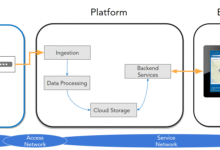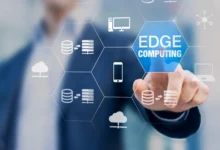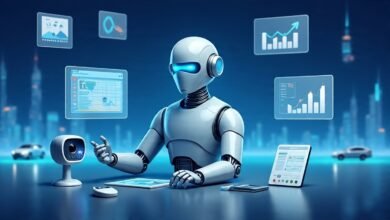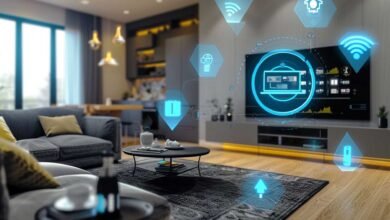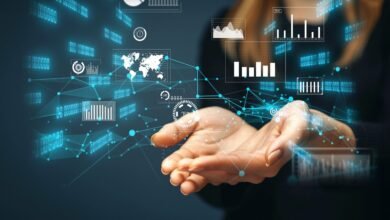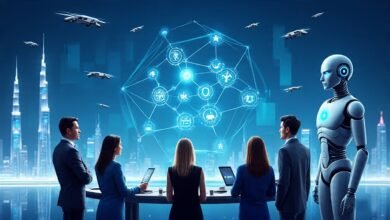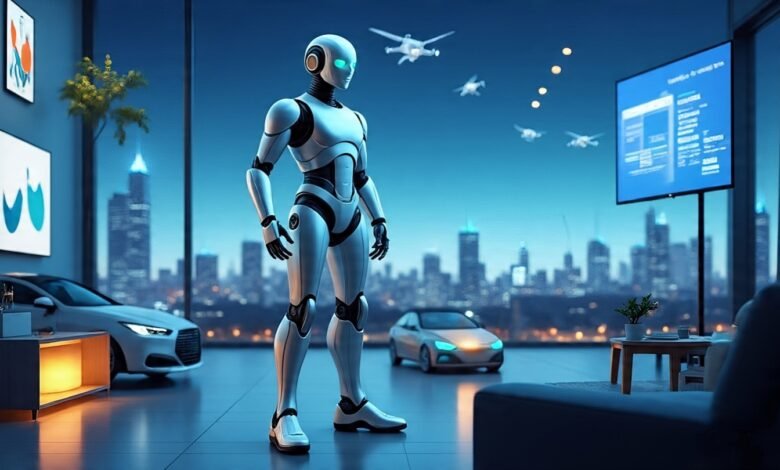
The convergence of Artificial Intelligence (AI) and the Internet of Things (IoT) is revolutionizing how we interact with technology in our daily lives, urban environments, and industrial operations. This powerful combination, often referred to as AIoT (Artificial Intelligence of Things), is creating unprecedented opportunities for smart home automation, intelligent cities, and industrial transformation. As we navigate through 2025, the AI IoT integration has become the cornerstone of digital innovation, driving efficiency, sustainability, and enhanced user experiences across multiple sectors.
The global smart home automation market is projected to reach $1,149 billion by 2034, with IoT devices forming the backbone of this exponential growth. Meanwhile, Industrial IoT (IIoT) applications are transforming manufacturing processes through predictive maintenance, real-time data analytics, and intelligent automation. Smart cities worldwide are leveraging connected devices and AI-powered systems to optimize traffic flow, reduce energy consumption, and improve citizen services. This comprehensive integration of machine learning, cloud computing, and edge computing technologies is reshaping our understanding of what’s possible in the digital age.
The synergy between AI and IoT extends beyond simple connectivity, creating intelligent ecosystems that can learn, adapt, and make autonomous decisions. From smart thermostats that predict user preferences to industrial sensors that prevent equipment failures, these technologies are delivering tangible benefits in energy efficiency, cost reduction, and operational excellence. As 5G connectivity and advanced analytics continue to mature, the potential for AIoT applications grows exponentially, promising a future where our homes, cities, and industries operate with unprecedented intelligence and efficiency.
Understanding AI and IoT Integration
What is AIoT?
AIoT represents the seamless fusion of Artificial Intelligence capabilities with Internet of Things infrastructure, creating systems that can collect, process, and act upon data autonomously. This AI IoT integration enables devices to move beyond simple connectivity to exhibit intelligent behavior, learning from patterns and making informed decisions without constant human intervention.
The foundation of AIoT lies in its ability to transform raw data from IoT sensors into actionable insights through machine learning algorithms and advanced analytics. This process involves real-time data processing, pattern recognition, and predictive modeling that enables systems to anticipate needs, optimize performance, and respond to changing conditions dynamically.
Core Components of AI IoT Systems
Modern AI IoT ecosystems comprise several critical components working in harmony. Smart sensors and connected devices form the data collection layer, gathering information about environmental conditions, user behaviors, and system performance. Edge computing capabilities process data locally, reducing latency and enabling instant responses to critical situations.
Cloud computing platforms provide the computational power necessary for complex AI algorithms and data analytics, while 5G connectivity ensures seamless communication between devices and systems. Machine learning models continuously improve system performance by learning from historical data and user interactions, creating increasingly sophisticated and personalized experiences.
Smart Homes: The Personal AI IoT Revolution
Intelligent Home Automation
Smart home automation has evolved from simple remote-controlled devices to sophisticated AI-powered ecosystems that anticipate and respond to homeowner needs. Voice assistants like Amazon Alexa and Google Assistant serve as central hubs, coordinating between various smart appliances, lighting systems, and security devices to create seamless living experiences.
Modern smart thermostats exemplify the power of AI IoT integration, learning from occupancy patterns, weather conditions, and user preferences to optimize energy efficiency while maintaining comfort. These systems can reduce energy consumption by up to 30%, translating to significant cost savings for homeowners while contributing to environmental sustainability.
Advanced Security and Monitoring
Smart security systems leverage AI-powered cameras, motion sensors, and intelligent door locks to provide comprehensive home protection. These systems use facial recognition and behavioral analysis to distinguish between family members, guests, and potential intruders, reducing false alarms while maintaining high security standards.
Wearable devices and health monitoring systems integrated into smart homes enable continuous wellness tracking, particularly beneficial for elderly residents or those with chronic health conditions. AI algorithms analyze vital signs, activity patterns, and environmental factors to detect anomalies and alert caregivers or medical professionals when necessary.
Energy Management and Sustainability
AI-driven energy management systems optimize power consumption across all connected devices in the home. These systems coordinate the operation of smart appliances, solar panels, and energy storage systems to minimize costs and reduce environmental impact. Predictive analytics help anticipate energy needs based on weather forecasts, occupancy patterns, and utility pricing structures.
Smart lighting systems automatically adjust brightness and color temperature based on time of day, occupancy, and natural light availability. Automated HVAC systems work in conjunction with smart windows and insulation monitoring to maintain optimal indoor environments while minimizing energy waste.
Smart Cities: Urban Intelligence at Scale
Intelligent Transportation Systems
Smart cities are revolutionizing urban mobility through AI-powered transportation networks that optimize traffic flow, reduce congestion, and improve public safety. IoT sensors embedded in roads, traffic signals, and vehicles collect real-time data on traffic patterns, enabling AI algorithms to dynamically adjust signal timing and routing recommendations.
Connected vehicles and autonomous transportation systems communicate with urban infrastructure to coordinate movement, reduce accidents, and optimize fuel consumption. Public transportation systems use predictive analytics to adjust schedules, manage capacity, and provide real-time information to commuters.
Smart Grid and Energy Distribution
Smart grid systems represent a fundamental transformation in how cities manage energy distribution and consumption. AI-powered systems balance electricity supply and demand in real-time, integrating renewable energy sources, energy storage systems, and consumer demand to optimize efficiency and reliability.
Smart meters and IoT sensors throughout the grid provide granular data on energy usage patterns, enabling predictive maintenance of infrastructure and more accurate demand forecasting. These systems can automatically redirect power during outages, isolate problems, and restore service more quickly than traditional grid systems.
Urban Infrastructure Management
Smart city platforms monitor and manage critical infrastructure including water systems, waste management, and public facilities through extensive networks of IoT devices and AI analytics. Smart water systems detect leaks, monitor quality, and optimize distribution to reduce waste and ensure public health.
Intelligent waste management systems use IoT sensors in bins and collection vehicles to optimize pickup routes, reduce operational costs, and maintain cleaner urban environments. AI-powered maintenance systems monitor the condition of roads, bridges, and public buildings, scheduling repairs proactively to extend infrastructure lifespan and ensure public safety.
Industrial IoT: Manufacturing Intelligence
Predictive Maintenance Revolution
Industrial IoT (IIoT) applications are transforming manufacturing through predictive maintenance systems that prevent equipment failures before they occur. AI algorithms analyze data from industrial sensors monitoring vibration, temperature, pressure, and other critical parameters to identify patterns that indicate impending failures.
This approach can reduce maintenance costs by up to 25% while increasing equipment uptime by 75%. Machine learning models continuously improve their predictive accuracy by learning from historical failure data and operational conditions, enabling more precise maintenance scheduling and resource allocation.
Smart Manufacturing and Industry 4.0
Smart manufacturing systems integrate AI, IoT, and robotics to create autonomous production environments that adapt to changing demands and optimize efficiency. Connected machinery communicates with central control systems to coordinate production schedules, quality control, and resource allocation in real-time.
AI-powered quality control systems use computer vision and machine learning to detect defects, variations, and anomalies that human inspectors might miss. These systems can process thousands of items per minute, ensuring consistent product quality while reducing waste and rework costs.
Supply Chain Optimization
IIoT systems provide end-to-end visibility into supply chains through connected sensors that track inventory levels, shipment locations, and environmental conditions. AI analytics optimize inventory management, predict demand fluctuations, and identify potential supply disruptions before they impact production.
Automated warehousing systems use IoT devices and AI algorithms to optimize storage layouts, picking routes, and inventory rotation. Predictive analytics help anticipate seasonal demand variations, enabling more efficient inventory management and reduced carrying costs.
Technology Enablers: The Foundation of AI IoT
5G Connectivity and Edge Computing
5G technology provides the high-speed, low-latency connectivity necessary for real-time AI IoT applications. This enhanced connectivity enables instant communication between devices, supporting applications like autonomous vehicles, remote surgery, and real-time industrial control that require immediate responses.
Edge computing brings AI processing closer to IoT devices, reducing latency and bandwidth requirements while improving privacy and security. This distributed approach enables real-time decision-making at the device level, essential for applications where milliseconds matter.
Machine Learning and Advanced Analytics
Machine learning algorithms form the intelligence layer of AI IoT systems, enabling devices and systems to learn from data and improve performance over time. Deep learning techniques process complex data patterns from multiple sensors, enabling applications like predictive maintenance, anomaly detection, and behavioral analysis.
Advanced analytics platforms integrate data from multiple sources to provide comprehensive insights into system performance, user behavior, and operational efficiency. These platforms use cloud computing resources to process vast amounts of data and generate actionable recommendations for system optimization.
Security and Privacy Considerations
Cybersecurity remains a critical concern in AI IoT deployments, with connected devices creating potential entry points for malicious attacks. AI-powered security systems monitor network traffic, detect unusual behavior patterns, and respond to threats in real-time to protect sensitive data and critical infrastructure.
Privacy protection mechanisms ensure that personal data collected by IoT devices is processed securely and used only for intended purposes. Encryption, authentication, and access controls protect data throughout its lifecycle, from collection through processing and storage.
Real-World Applications and Success Stories
Smart Home Implementations
Leading technology companies have demonstrated the transformative potential of AI IoT in residential settings. Lennar Corporation’s smart homes feature integrated Amazon Alexa systems, smart thermostats, and connected security systems that work together to create personalized living experiences while optimizing energy efficiency.
Smart appliances from manufacturers like Samsung and LG use AI algorithms to learn user preferences and optimize performance. Smart refrigerators track food inventory and suggest recipes, while intelligent washing machines adjust cycles based on fabric types and soil levels to maximize cleaning effectiveness while minimizing resource consumption.
Urban Innovation Projects
Singapore’s Smart Nation initiative exemplifies comprehensive smart city implementation, using IoT sensors and AI analytics to optimize traffic flow, monitor air quality, and manage urban resources. The city’s intelligent transportation system reduces travel times by 25% while decreasing emissions through optimized routing and traffic management.
Barcelona’s smart city projects include IoT-enabled parking systems that guide drivers to available spaces, smart water management that reduces consumption by 15%, and intelligent street lighting that adjusts brightness based on pedestrian and vehicle traffic while reducing energy costs by 30%.
Industrial Transformation Cases
General Electric’s Predix platform demonstrates the power of IIoT in industrial applications, monitoring thousands of connected machines across multiple industries. The platform’s predictive analytics capabilities have helped customers reduce maintenance costs by $1.7 billion while improving equipment reliability and operational efficiency.
Siemens’ MindSphere platform connects over 1.5 million IoT devices worldwide, enabling predictive maintenance, energy optimization, and performance monitoring across various industries. The platform’s AI algorithms process billions of data points daily to provide actionable insights that improve operational efficiency and reduce costs.
Benefits and Challenges of AI IoT Integration
Transformative Benefits
The integration of AI and IoT delivers measurable benefits across multiple dimensions. Energy efficiency improvements of 20-30% are common in smart buildings and industrial applications, translating to significant cost savings and reduced environmental impact. Predictive maintenance reduces unplanned downtime by up to 50%, while AI-powered optimization improves overall equipment effectiveness.
Enhanced user experiences result from systems that learn and adapt to individual preferences, providing personalized services that anticipate needs and respond proactively. Operational efficiency improvements enable organizations to accomplish more with fewer resources, improving competitiveness and profitability.
Implementation Challenges
Data quality remains a significant challenge, as AI algorithms require high-quality, consistent data to function effectively. Many organizations struggle with data integration from multiple sources, data cleaning, and ensuring data accuracy across diverse IoT devices and systems.
Interoperability issues arise when integrating devices and systems from different manufacturers, requiring standardized protocols and interfaces to ensure seamless communication. Cybersecurity concerns grow as connected devices multiply, requiring robust security frameworks and continuous monitoring to protect against evolving threats.
Skills gaps in AI, IoT, and data analytics limit many organizations’ ability to implement and maintain these systems effectively. Change management challenges arise as organizations adapt to new workflows and processes enabled by intelligent automation.
Future Trends and Innovations
Emerging Technologies
Quantum computing promises to revolutionize AI processing capabilities, enabling more sophisticated machine learning algorithms and real-time analytics at unprecedented scales. 6G connectivity will provide even faster, more reliable connections that support advanced AI IoT applications including holographic communications and tactile internet.
Digital twins create virtual replicas of physical systems that enable predictive modeling, scenario testing, and optimization without disrupting actual operations. These virtual environments allow organizations to experiment with different configurations and strategies before implementing changes in the real world.
Market Projections
The global AI IoT market is projected to reach $102.1 billion by 2026, driven by increasing adoption across multiple industries and applications. Smart home markets are expected to grow at a CAGR of 27.11%, while Industrial IoT investments continue to accelerate as organizations recognize the competitive advantages of intelligent automation.
Edge AI deployment is expected to increase dramatically as processing capabilities improve and costs decrease, enabling more real-time applications and reducing dependence on cloud computing for critical functions. Sustainability initiatives will drive increased adoption of AI IoT systems that optimize energy consumption and reduce environmental impact.
Innovation Horizons
Artificial General Intelligence (AGI) integration with IoT systems may eventually enable truly autonomous environments that can handle complex, unpredictable situations without human intervention. Brain-computer interfaces could provide new ways to interact with smart environments, enabling direct neural control of connected devices.
Swarm intelligence approaches may enable large networks of simple IoT devices to exhibit complex, coordinated behaviors that solve problems beyond the capability of individual devices. Quantum sensors could provide unprecedented precision in environmental monitoring and system control.
Best Practices for Implementation
Strategic Planning
Successful AI IoT implementation requires comprehensive strategic planning that aligns technology investments with business objectives. Organizations should start with pilot projects that demonstrate clear value propositions before scaling to enterprise-wide deployments.
Data governance frameworks ensure that data collected by IoT devices is managed consistently, securely, and in compliance with regulatory requirements. Privacy by design principles should guide system architecture to protect user rights while enabling valuable AI applications.
Technical Considerations
Scalable architectures accommodate growth in connected devices and data volumes without requiring complete system redesigns. Modular approaches enable incremental implementation and easier maintenance, while standardized interfaces ensure compatibility with future technologies.
Security frameworks should include device authentication, encrypted communications, secure firmware updates, and continuous monitoring for threats. Backup and recovery systems ensure business continuity in case of system failures or cyber attacks.
Conclusion
The convergence of AI and IoT is fundamentally transforming how we live, work, and interact with our environment, creating intelligent ecosystems that enhance efficiency, sustainability, and quality of life across smart homes, cities, and industries. Through real-time data analytics, predictive maintenance, automated optimization, and personalized experiences, AIoT technologies are delivering measurable benefits including significant energy savings, cost reductions, and operational improvements. While challenges around data quality, cybersecurity, interoperability, and skills gaps remain, the rapid advancement of 5G connectivity, edge computing, machine learning algorithms, and cloud platforms continues to expand the possibilities for AI IoT integration. As we look toward 2025 and beyond, organizations that successfully implement intelligent automation and connected device ecosystems will gain competitive advantages in an increasingly digital world, driving innovation and creating sustainable value for stakeholders while contributing to the development of truly smart cities and intelligent industries.
